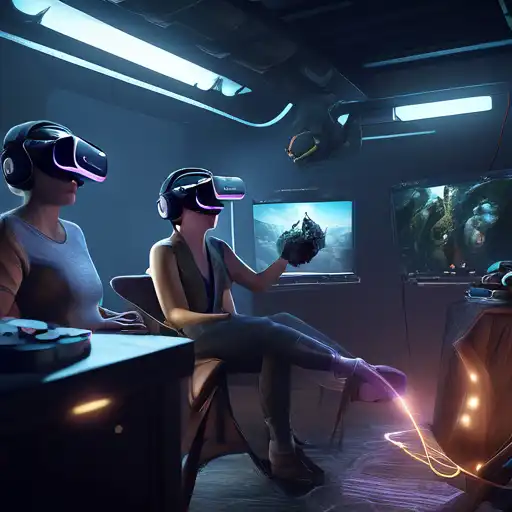Introduction to Virtual Reality
Virtual Reality (VR) has transformed the way we interact with digital content, offering unparalleled immersive experiences. From gaming to education, VR's applications are vast and varied. This guide will walk you through the essentials of creating captivating VR experiences that engage and astonish users.
Understanding VR Technology
Before diving into VR development, it's crucial to understand the technology behind it. VR relies on headsets and motion tracking to create a simulated environment. Key components include:
- Head-Mounted Displays (HMDs)
- Motion Tracking Sensors
- 3D Audio Systems
These elements work together to trick the brain into believing it's in a different world, making the experience as real as possible.
Designing for Immersion
Creating an immersive VR experience requires careful planning and design. Here are some tips to enhance immersion:
- Focus on user interaction: Ensure users can interact with the environment in meaningful ways.
- Pay attention to detail: High-quality textures and realistic physics can significantly improve the experience.
- Optimize performance: A smooth frame rate is essential to prevent motion sickness.
By prioritizing these aspects, you can create a VR experience that captivates and retains users' attention.
Developing VR Content
Development is where your VR experience comes to life. Popular platforms for VR development include Unity and Unreal Engine, both offering robust tools for creators. Key considerations during development include:
- Choosing the right platform based on your project's needs.
- Implementing intuitive controls that feel natural to users.
- Testing extensively to identify and fix any issues.
With the right approach, you can develop VR content that stands out in the crowded digital landscape.
Optimizing for SEO
To ensure your VR content reaches its intended audience, SEO optimization is key. Incorporate relevant keywords, such as immersive VR experiences and VR development guide, throughout your content. Additionally, consider creating internal links to related articles or projects to keep users engaged and improve your site's SEO performance.
Conclusion
Creating immersive VR experiences is both an art and a science. By understanding the technology, focusing on immersive design, and following best practices in development and SEO, you can craft experiences that transport users to new worlds. Whether you're a seasoned developer or new to VR, the possibilities are endless.
